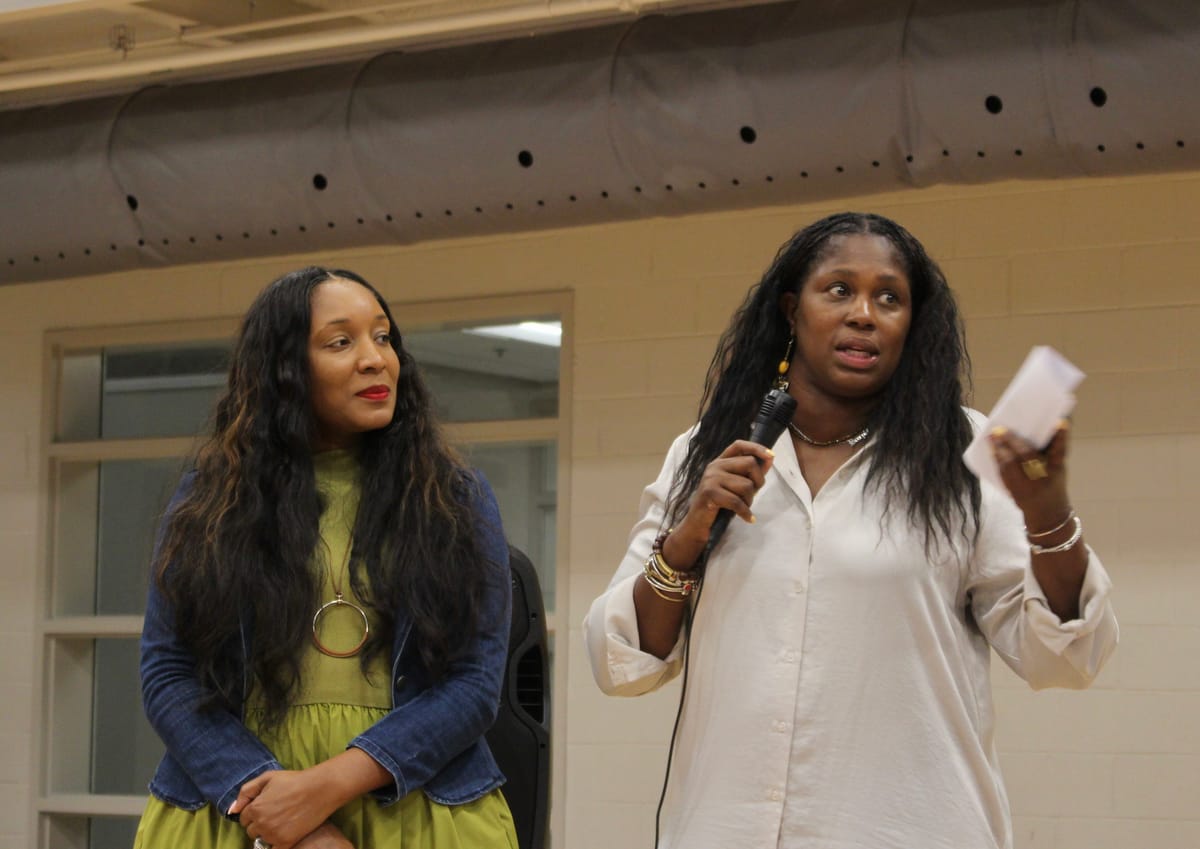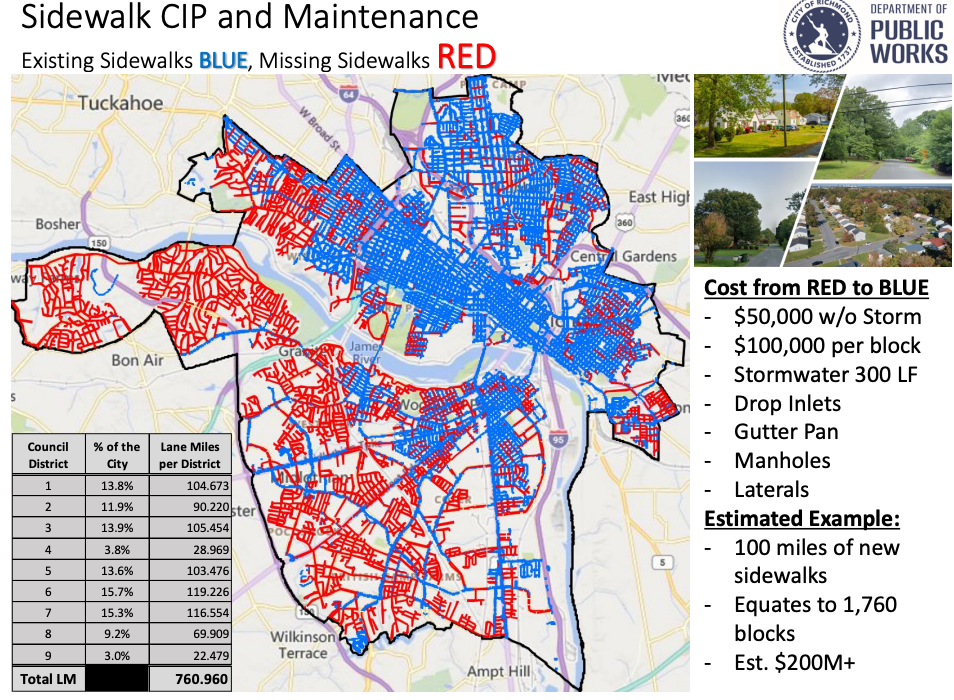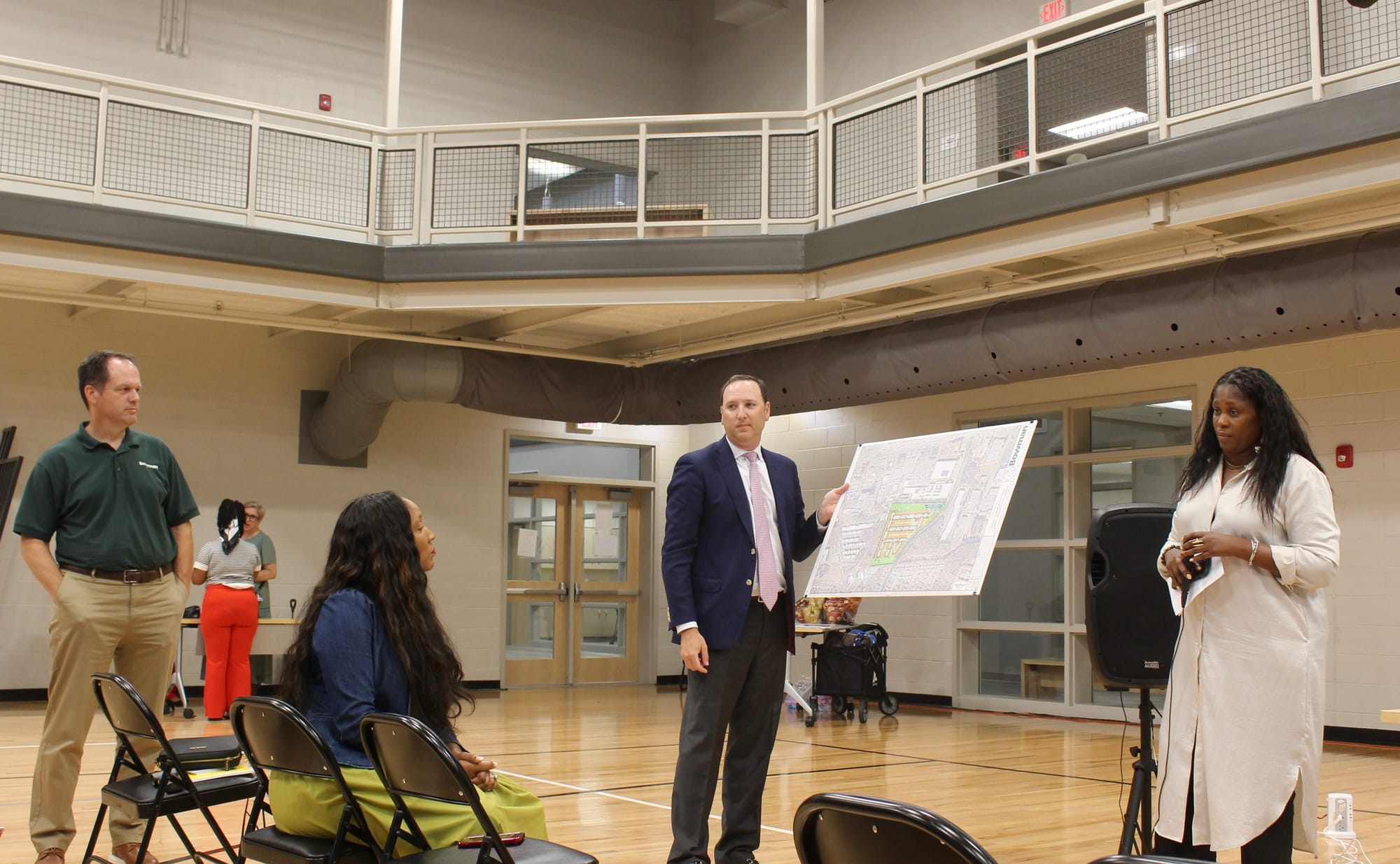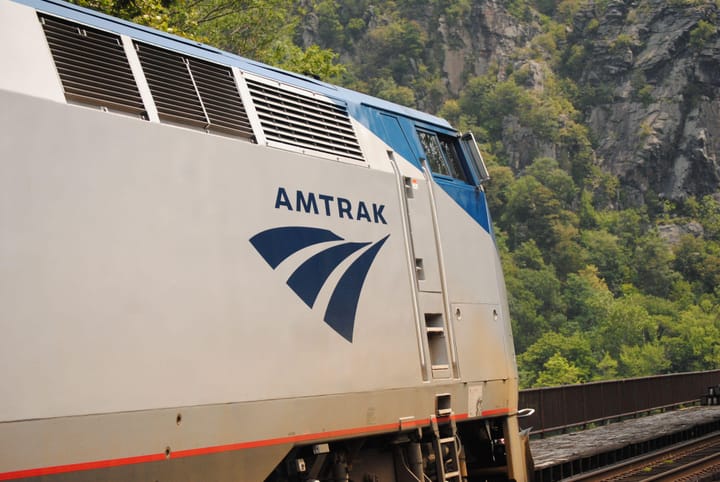Mushrooming development on Southside brings sidewalk and school shortfalls into focus

For months, a plan to build six apartment buildings with 180 affordable units off Snead Road in South Richmond has been stalled. A major reason? Sidewalks — or a complete lack of them.
“It’s not like we’re building in the Fan and the sidewalks are already there,” said City Councilor Nicole Jones, whose 9th District has five affordable housing projects in the pipeline. All five have gotten City Council’s blessing and are set to add 955 units to the area; if Snead can also get its backing, that would bring the total to more than 1,100.
And that’s not counting market-rate projects or smaller plans to build on existing parcels as property owners and developers try to capitalize on the demand for housing in a city that has seen rents and home prices soar in recent years.
“The 9th District is starting to see a lot of rapid growth, and that’s great,” said School Board Chair Shavonda Fernandez, who also represents the area. “But as we think about development, if you have another 243 units, that means another 243 families.”
Those population increases are welcome to many elected officials who perceive the 8th and 9th districts of Richmond’s Southside as having been historically overlooked and underinvested.
“Growth is good,” Jones told a group of residents at an Aug. 28 meeting on a major new affordable development off East German School Road.
“You’re doggone right it’s good,” 8th District City Councilor Reva Trammell told The Richmonder in a separate interview.
But that growth is also putting pressure on some of the Southside’s longstanding shortfalls. Because nearly all of the 8th and 9th districts were annexed from Chesterfield County in the 1940s and 1970s, they were designed as suburbs, and they continue to lag behind other areas of Richmond in infrastructure like sidewalks and stormwater control. Some schools on the Southside also face overcrowding, and have turned to trailers to serve all the students they have.
“Development is not just about ‘let’s develop,’” said Jones. “We have some infrastructure issues that have to be addressed.”
Richmond officials readily acknowledge those problems — and the money it will take to fix them.
“The rapid pace of affordable housing development in our Southside neighborhoods has been critical in creating rental and homeownership opportunities for residents, but we recognize that this kind of growth can come with distinct challenges,” said Sharon Ebert, Richmond’s deputy chief administrative officer for planning and economic development. “More families moving into our neighborhoods means that our schools and community gathering spaces feel crowded and our roads and sidewalks get stretched.”
It's our birthday week! Will you help us reach our goal of finding 50 new members to support local reporting?
Sidewalks and stormwater
Maps compiled by Richmond’s Department of Public Works make it clear that most of the city streets that lack sidewalks are in the Southside — not just the 8th and 9th districts, but the leafier riverfront 4th District.

Replacing them is expensive, about $50,000 per block. So is new stormwater infrastructure, which is also badly needed on the flood-prone Southside. One ongoing project to add and upgrade stormwater infrastructure in the neighborhoods around the McGuire veterans hospital will cost an estimated $18.5 million, much of it from COVID-era federal funding.
As time passes, those costs only increase, Trammell warned: “Materials go up. Labor goes up.”
This year’s city budget includes funding for several major sidewalk additions, including $873,000 to construct a new sidewalk along a stretch of Carnation Street from Hioaks Road to Warwick Road. And a major $37 million transformation of Hull Street that will include new sidewalks got underway earlier this year.
“Those are the types of projects that we need, because we built, and the infrastructure wasn’t there,” said Jones.
But for some new housing projects, sidewalk gaps present a chicken-and-egg-type of dilemma: Should the city build out missing infrastructure first in hopes of developers then constructing housing there, or should the housing come first and the infrastructure be backfilled?

That’s one of the questions surrounding the Lawson Companies’ Snead Road development. The city has drawn up a performance grant agreement for the project that would require Lawson to keep all of the units at federally mandated affordability levels, but Richmond’s Planning Department has repeatedly recommended that officials deny it a special use permit.
Planning staff cite a range of reasons why the development shouldn’t be approved, including their view that it’s too dense for the surrounding area and not in line with Richmond’s future land use map. But one key issue has stuck out to Jones: their conclusion that the project “will subject future residents to an unsafe pedestrian environment.”
For the councilwoman, the lack of sidewalks surrounding the site has been the major barrier to her support.
“I think sidewalks should be included in all new development. That’s just me personally,” she said.
Since the project came before City Council in January, Lawson has pledged to build a sidewalk from the property to J.L. Francis Elementary as a condition of its permit, or pay the city $50,000 for that purpose. Planners, however, note in a Sept. 2 memo that the stretch of Snead in the other direction “is without sidewalks, crosswalks, shoulders, stop signs, or yield signs.”
Preston Lloyd, an attorney representing Lawson, said the Snead situation is one that will crop up again and again.
“The areas that are best for affordable housing are also those areas that have suffered from historic inequality,” he said. And while the city can push developers to make critical infrastructure investments, he contended that “very often the capital costs of those needs far exceeds what an affordable housing project can support itself, in which case the city has to step up in a meaningful way.”
That, he acknowledged, is easier than it sounds in a city that regularly insists it is strapped for cash: “The city doesn’t have a blank check it can write.”
Ebert said Richmond is making progress on its infrastructure investments, pointing not only to the ongoing Hull Street work, but also the brand-new T.B. Smith Community Center in Davee Gardens, the overhaul of the Southside Community Center and a planned new park on a 96-acre parcel the city purchased from Altria at the end of 2024.
Still, she said, “we recognize that more can be done and remain committed to infrastructure improvement to suit the families and businesses who call Southside home.”
The Richmonder is powered by your donations. For just $9.99 a month, you can join the 1,000+ donors who are keeping quality local journalism alive in Richmond.
Schools
It isn’t only the city that has to plan for increased growth. Richmond Public Schools will also have to figure out how to accommodate more students as housing brings a wave of new families, some of them zoned for schools already bursting at the seams.
“You can put up a million houses, but where are you going to put the children?” asked Mary Gresham, a 9th District resident and RPS employee, during the August meeting on the German School Road project.
School populations vary wildly across the city. A 2018 school capacity study done for the district by Cropper GIS found buildings ranged from 33% capacity (for Community High) to 143% (for Broad Rock Elementary) in the 2018-19 school year. Many of the overpopulated schools were on the Southside. River City Middle, which opened in fall 2020 for 1,500 students, had exceeded its capacity a year later.
“My school is overcrowded,” J.L. Francis Elementary Principal Kecia Ryan told Jones and Fernandez this August.
Several times during the meeting Fernandez expressed the belief that RPS is “past the point of rezoning.”
“We have way too many children in the 9th District, the 8th District,” she said.
RPS actively tracks enrollment trends. But Jones, a former School Board member, said the city and the schools will have to work closely to ensure that everyone is aware of what development may be coming down the pike and what will be needed to accommodate it — particularly since the schools took control of building construction in 2021.
“Planning is not going to know the schools are overcrowded. That’s an administration conversation,” she said. Still, she continued, “we know that the housing is going to affect the schools.”
Contact Reporter Sarah Vogelsong at svogelsong@richmonder.org
It's our birthday week! Will you help us reach our goal of finding 50 new members to support local reporting?






